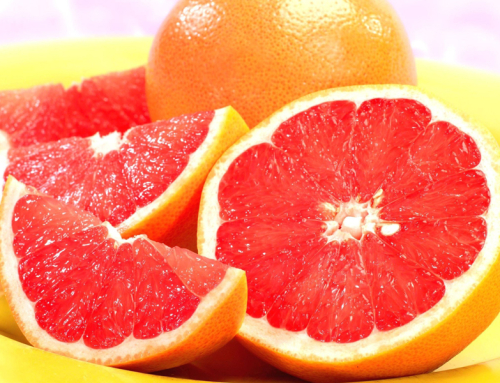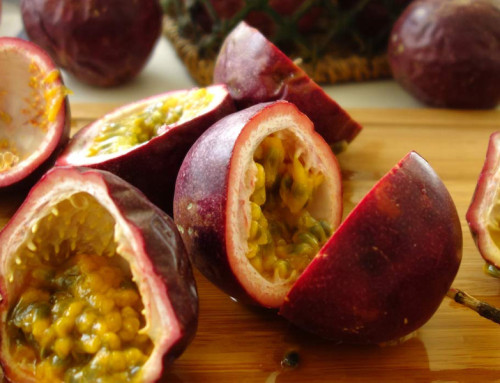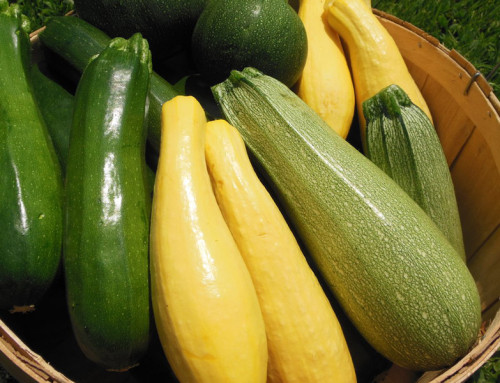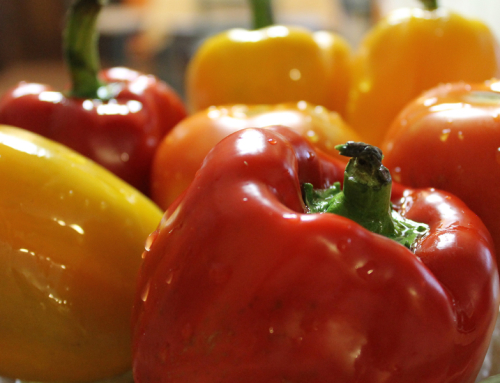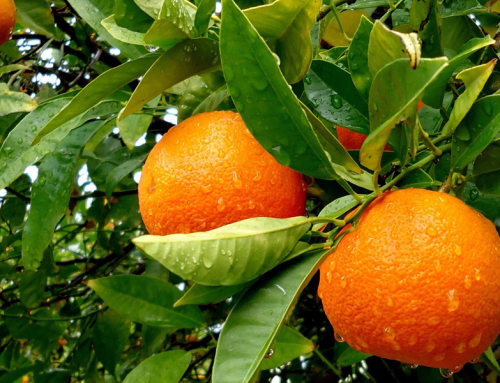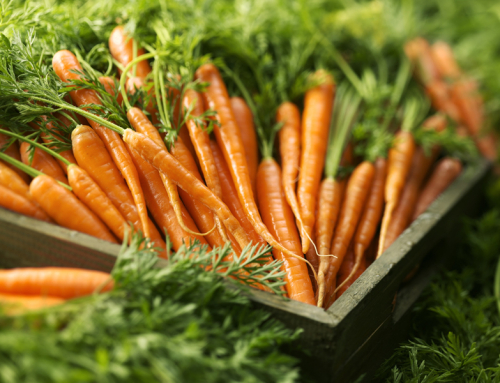Broccoli
- Raw chopped or diced, 1 cup (approx. 88 g) – 25 calories
- Raw spear, about 5″ long, 1 spear (approx. 31 g) – 9 calories
- Raw flower cluster, 1 floweret (approx. 11 g) – 3 calories
- Cooked from raw, chopped, 1 cup (approx. 156 g) – 44 calories
- Cooked from raw, spear, about 5″ long, 1 spear (approx. 37 g) – 10 calories
- Cooked from frozen, chopped, 1 cup (approx. 184 g) – 52 calories
Purple Cauliflower
- 100 grams = 25 calories
Chinese Broccoli (Kai-lan)
- 1 cup, cooked = 19.4 calories
Calabrese Broccoli
- 1 cup, chopped (91 g), Raw = 30 calories
- 1 cup, chopped (91 g), Steamed = 55 calories
- 1 cup, chopped (91 g), Frozen, cooked, boiled, drained, with or without salt = 51.5 calories
- 1 stalk (148 g), raw = 45 calories
- 1 stalk, large (11″-12″ long), raw = 32 calories
- 1 cup Florets (clusters) = 20 calories
- Leaves, Raw (100 g) = 28 calories
Broccolini
- Raw (35.5 g) = 10 calories
- 1 Bunch (184g) = 71 calories
- Steamed 1 cup = 25 calories
- Steamed (100 g) = 34 calories
- Steamed (3 oz) = 62 calories
For dehydrated broccolis, the drying process increases the sugar concentration by decreasing the water content, but the calories remain the same.
- Cooking methods, such as boiling and microwaving has been found to destroy heat sensitive vitamins such as folate, vitamin-C, some antioxidants, and some anti-cancer phytonutrients. But some preparation methods such as mild steaming and gentle braising have been shown not alter the composition of these compounds. However, it is best to eat broccoli raw whenever you can.
- Broccoli is a very low calorie vegetable that is densely packed with nutrients snf rich in dietary fiber, minerals, vitamins, and anti-oxidants that have proven health benefits.
- Broccoli has an oxygen radical absorbance capacity (ORAC) of 1632 µmol TE/100 grams, which is a measurement of total antioxidant strength.
- Broccoli is a well-known source of many phytonutrients such as thiocyanates, indoles, sulforaphane, isothiocyanates and flavonoids like beta-carotene cryptoxanthin, lutein, and zea-xanthin. These compounds modify signals at the molecular receptor level which helps protect the body from colon, prostate, urinary bladder, pancreatic, and even breast cancers.
- Broccoli is contains an exceptionally high amount of vitamin C. Provides 90 mg (approximaely 150% RDA) per 100 gram serving.. Vitamin C is an essential natural antioxidant and is important for immune system functioning such as developing resistance against infection, and scavenging harmful free radicals.
- A 100 gram servring of broccoli flower heads provides 623 IU or 21 % of daily recommended vitamin A. Along with other pigment-related compounds such as beta-carotene, alpha-carotene, and zea-xanthin (a flavonoid that helps protect eyes by filtering harmful ultra-violet rays). vitamin A helps maintain skin and mucus membranes, and is essential for healthy eye-sight and in preventing age-related macular degeneration.
- But the broccoli leaves are an even better source of carotenoids and vitamin A; (provide 16000 IU of vitamin A per 100 g) which several times more of these componunds than in the flower-heads.
- Broccoli is rich in vitamin K which is important for proper blood clotting.
- Broccoli is an important source of the vitamin B-complex group such as niacin (B-3), pantothenic acid (B-5), pyridoxine (B-6), and riboflavin.
- Broccoli flower heads are an excellent source of another B vitamin, the folates, with approximately 63 µg in a 100 g serving (16% RDA). A diet rich in folates during pre-conception, and pregnancy helps prevent neural tube defects in the fetus.
- Broccoli flower heads contain omega-3 fatty acids.
- Broccoli is a good source of the following minerals calcium, manganese, iron, magnesium, selenium, zinc and phosphorus.
Technically; broccoli is categorized into two main types according to its appearance. It is either a heading type or a sprouting type.
Purple Cauliflower
The heading variety forms a large, solid head, such as the purple cauliflower, which is a type of broccoli (not a type of cauliflower) and is sold in southern Italy, Spain, and also in the UK. The head is shaped like a cauliflower but it is full of tiny flower buds rather than “curds” that generally have a purple tint to the flower bud tips.
The bright purple color of this faux cauliflower, which is due to anthocyanin flavonoids, adds extra nutrition to the traditional broccoli in the form of more beneficial antioxidants. Anthocyanins, are also found in blueberries, red cabbage and red wine and have the ability to help stabilize capillary walls to prevent toxic substances from permeating cells. A 100 gram serving of purple cauliflower contains 100 percent of the daily requirement for vitamin C and 12 grams of fiber which takes care of nearly half the recommended daily amount. Dietary fiber helps keep the intestinal tract regular, and keeps you feeling full longer which can aid in weight loss. And the following recommended daily allowances: vitamin K (25%), folate (14%), vitamin B6 (11%), manganese (12%), and potassium (9%).
Calabrese Broccoli
The sprouting types form a large number of flower heads with many thin stalks that are known as florets and the mature broccoli that Americans know well is a sprouting type called the Calabrese broccoli (Brassica oleracea var. italica). The plant has a tree-like structure with large dark green or purple edible clusters of miniature flowerheads known as florets, or flowerets. It the whole cluster is usually about 4 to 10 inches in diameter, while the florets are approximately 1 t0 3 inches across. The thick, central stalk is about 6-10 inches long and is also edible along with the leaves. The tough stalks and thick leaves are generally discarded and should not be, as they are even more nutrtitious than then florets. Instead, they should be sliced thin with a paring knife for cooking, and both the leaves and stalks take a bit longer to cook than the florets.
Chinese Broccoli
Chinese broccoli is another sprouting type that is also known as Chinese kale, kailaan, kai-lan or gai lan.. It is a leafy vegetable that has flat, thick glossy blue-green leaves on thick stems with occassional tiny, floret clusters that are similar to broccoli. Broccoli and kai-lan belong to the same species Brassica oleracea, The flavor is similar to broccoli, but noticeably stronger, with a slightly bitter bite.
Chinese broccoli contains numerous antioxidant polyphenols comprising 45 flavonoids and 13 hydroxycinnamic derivatives. Flavonoids have anti-inflammatory properties and can be beneficial in atherosclerosis, arthritis, encephalomyelitis, colitis and asthma. A one cup serving of Chinese broccoli, cooked, has 1,441 IU of vitamin A, 24.8 mg of vitamin C and 88 mg of calcium.
Broccoli Rabe
Hybrid Broccoli and the Misleading Name Game
As if purple cauliflower wasn’t misleading enough, there are also a few different hybrids that have been developed with other members of the cruciferous family by either hand pollination or using natural pollinators.since they are closely related and fully genetically cross-compatible. The most well known are Broccolini (described below) and Broccoflower which is actually a green cauliflower. There is also a vegetable called Romanesco broccoli that is really a cauliflower cultivar (not a broccoli) that has fascinating fractal formations in the head. And there is also Broccoli Rabe (pronounced “broccoli rob”) that is more common in Italy than the Us and is NOT a type of broccoli at all, but rather is more closely related to mustard greens or turnips. Are you confused yet?
Broccolini
Broccolini is a hybrid of traditional American broccoli (Brassica oleracea var. botrytis) and Chinese broccoli (Brassica oleracea var. alboglabra). It has smaller florets and longer, thinner, more tender stalks, so it tends to cook faster. It is often misidentified as young broccoli. It is also known by the names bimi, asparation, asparations,, broccoletti, broccolette, tenderstem and baby broccoli. The name “broccolini” is a registered trademark of Mann Packing Company, Inc. The taste is similar to Calabrese broccoll, but it has a bit sweeter flavor with a peppery kick.
Nutritionally, broccolini and Calabrese broccoli are comparable. Both are high in vitamin C, vitamin A, vitalmin K calcium, folate, and iron and all those other compounds that make broccoli so healthy, including sulphoranes, indoles, and isothiocyanates, which are found in all cruciferous vegetables.
NOTE: Like the other members of the cruciferous family of vegetables, as well as some legumes, broccoli contains compounds known as “goitrogens”. These may cause swelling of the thyroid gland in sensitive individuals and should be avoided by people with a thyroid dysfunction. However, they may be eaten liberally by thyroid-healthy individuals.
Goitrogens slows production of thyroid hormones, and critically low levels can decrease energy and cause weight gain. When the thyroid tries to compensate for the low level by producing more hormones, it may enlarge and form a goiter. Many very healthy fruits, vegetables, legumes, and nuts contain goitrogens, but if your thyroid is healthy and you get adequate iodine in your diet, usually from iodized salt (though it is best obtained from organic sea salt), then goitrogens will have no noticeable effect.
However, an impaired thyroid, or a person with thyroid disease, can be more vulnerble to the subtle effects of the goitrogens, with hypothyroidism (underactive thyroid) as a result. But subtle degrees of hypothyroidism may actually be quite common in our society and contribute to everything from fatigue to depression, weight gain and hair loss, all of which we tend to complain about, whether we are broccoli eaters or not. So, don’t let these stop you from the health benefits of eating broccoli.
Broccoli is a delicious (really!) flowering vegetable and is a member of the large cruciferous (Brassica) family of vegetables, which also include cauliflower, brussel sprouts, cabbage, arugula, etc. Broccoli, as well as the other cruciferous vegetables, is well known for its notable and unique nutrients and rich source of phyto-nutrients that have been found to have disease prevention properties, that help protect from certain cancers as well as stroke risks and heart disease and other health promoting properties.


